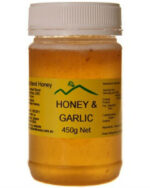Why does Honey Crystallise or Candy?

Crystallising honey or candied honey is a good indication that your honey is raw (unpasteurised) and not leached of beneficial properties.
HONEY CRYSTALLISATION IS GOOD NEWS.
Honey found in the supermarket is heated so that it is more viscous and can be blasted through very fine filters specifically to stop the crystallisation. And, as has been reported in the past, some producers will add water to the solution which will also stop the natural crystallisation.
So why is pasteurising and filtering bad? Firstly the heating process (or pasteurisation) destroys many of the therapeutic and nutrient properties of honey. The second problem in mass production is the super fine filtration of the heated honey removes all the nutrient rich particles such as pollen, enzymes and propolis. It’s these particles that act as the nuclei to trigger the crystallisation process.
Once the good stuff is removed the honey becomes more stable but then is just a natural flavoured syrup. A honey bursting with pollen is more cloudy. You can believe that this honey contains vitamins, minerals, amino acids, enzymes, organic acids, pollen, fragrance and flavour compounds.
Why does honey crystallise?
Honey is a super-saturated sugar solution, containing more than 70% sugars and less than 20% water. Normally water cannot dissolve that amount of sugar, it’s the magical chemistry ability of bees that make it possible. In the honey making process the water dissolves this high amount of sugar because of the heat in the hive, enzymes from the bees and other chemicals found in pollen and nectar.
The honey solution is molecularly unstable and the sugar will tend to separate out of the water into sugar crystals. Honey Crystallisation is a natural phenomenon. Crystallisation is when the sugar separates from the water and it looks like candy. Candied honey will look paler than liquid honey.
The sugar in honey is formed from glucose and fructose. The combination of glucose to fructose will depend on the nectar that the honey has been derived from. The ratio of glucose to fructose will determine how fast the honey crystallises. Glucose does not dissolve as well as fructose so it is the glucose that forms into crystals.
Crystallisation is a molecular reaction that can begin anywhere in the honey. Caused by a nuclei (eg pollen, enzymes, air), glucose crystals form like fractals and spread to all touching molecules. If there is liquid remaining this will be the fructose still dissolved in water.
Honey varietals with a low fructose to glucose ratio, such as floral varietals crystallise swiftly in days, while honey varieties with a high fructose to glucose ratio like Eucalyptus crystallise slowly and can stay liquid for years if sealed well.
How to decrystallise honey?
It is good to know that crystallisation is an attribute of pure raw honey. When liquifying honey remember subjecting it to too much heat would destroy the live enzymes.
Your honey will crystallise again especially if there are plenty of crystals still visible.
To rapidly liquify candied honey:
Place jar in a warm water bath of about 40ºC for about 15 minutes or until granules have dissolved.
Store honey at room temperature in air-tight containers. Refrigerating it is not recommended as it would accelerate the process of crystallisation and harden the honey making it difficult to scoop.
If you specifically want to order candied honey from Highland Honey then put this in the Notes when completing your order.
-
 Honey & Garlic 450g Jar$8.50
Honey & Garlic 450g Jar$8.50 -
 Irish Cream 325g$8.50
Irish Cream 325g$8.50
